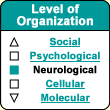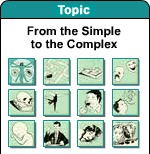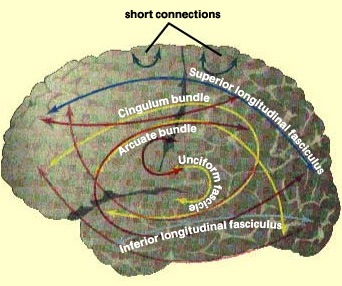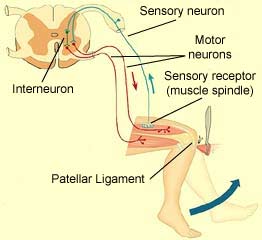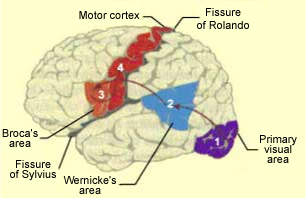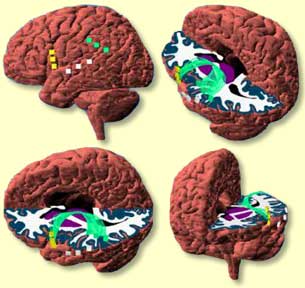The simplicity of the knee-jerk reflex, which is involved in maintaining a standing position, allows the three basic parts of a neural circuit to be readily distinguished: the sensory input, the information processing, and the motor output.
Each of these three parts of the circuit corresponds to a different kind of neuron. First, the sensory neuron detects the stretching of the muscle. Since this reflex involves two opposing muscles, several connections are needed to process the information (which is why this is classified as a polysynaptic reflex).
An excitatory synapse directly stimulates a motor neuron responsible for contracting the extensor muscle. But in addition, another branch of the sensory axon stimulates an inhibitory interneuron that reduces the activity of the motor neuron for the flexor muscle.
This circuit comprises only a few synapses and is very short, which is why it acts so quickly. It also functions very well with no intervention by the conscious brain, which has better things to do than constantly remind the body to stay upright. |



